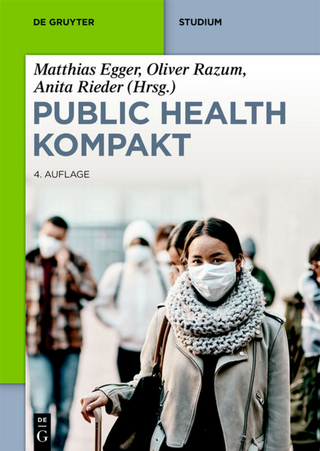
Medical Epidemiology: Population Health and Effective Health Care
McGraw Hill Higher Education (Verlag)
978-1-259-25185-6 (ISBN)
- Titel ist leider vergriffen;
keine Neuauflage - Artikel merken
Understand the role of epidemiology in clinical medicine for the best patient outcomes possible
For nearly a quarter of a century, Medical Epidemiology has been the go-to text for understanding the principles and concepts of epidemiology and the relationship between population-based science and efficient patient care. It delivers the most current information on patterns of disease occurrence and risk factors – all clearly linked to clinical practice through the use of Health Scenarios in every chapter.
This edition of Medical Epidemiology has been completely rewritten to reflect the transformative changes in the manner in which epidemiologic methods are being utilized in today’s healthcare as well as the major shifts that have occurred at the policy level.
New chapters have been added on many timely topics, including global health, social determinants of health, health inequalities, comparative effectiveness, quality of care, variations in care, and implementation science. Increased information about evaluating, summarizing, and using evidence for improved patient care and outcomes gives this edition an even greater clinical focus.
Raymond S. Greenberg, MD, PhD is President of the Medical University of South Carolina. While nationally recognized for his cancer research, Dr. Greenberg has also authored nearly 150 scientific publications. Additionally, Dr. Greenberg is an active participant on several national scientific advisory boards.
Section I: Population Health
Chapter 1: Populations
a. Community
b. Region
c. Country
d. Global
e. Special populations
Chapter 2: Metrics
a. Prevalence
b. Incidence rate
c. Mortality rate
d. Infant mortality
e. Life expectancy
f. Years of potential life lost
g. Disability-adjusted life years
Chapter 3: Patterns of Occurrence
a. Age
b. Race/ethnicity
c. Gender
d. Geographic
e. Temporal
Chapter 4: Global Burden of Disease
a. Study design and goals
b. Mortality patterns
c. Healthy life expectancy
d. Disability-adjusted life years
e. Risk factors
Chapter 5: Social Determinants of Health
a. Definition
b. Whitehall Study
c. Education
d. Income
e. Housing
f. Food security
g. Physical and social environment
Chapter 6: Health Disparities
a. Health Inequities
b. Social determinants
c. Culture
d. Discrimination
e. Access to care
f. Quality of care
Section II. Collecting Evidence for Medical Practice
Chapter 7: Clinical trials
a. Design
b. Subject selection
c. Randomization
d. Blinding
e. Analysis
f. Sample size
g. Limitations
Chapter 8: Cohort studies
a. Design
b. Subject selection
c. Exposure assessment
d. Analysis
e. Limitations
Chapter 9: Case-control studies
a. Design
b. Subject selection
c. Matching
d. Exposure assessment
e. Analysis
f. Limitations<
/FONT>
Chapter 10: Diagnostic tests
a. Sensitivity and specificity
b. Positive and negative predictive value
c. Likelihood ratios
d. ROC Curves
e. Limitations
Section III. Assessing Evidence for Medical Practice
Chapter 11: Comparative effectiveness
a. Definition
b. Objectives
c. Approaches
d. Systematic reviews
e. PICOTS principles
Chapter 12: Planning a review
a. Selecting a topic
b. Key informants
c. Analytic framework
Chapter 13: Finding evidence
a. Study eligibility
b. Types of studies
c. Grey literature
d. Possible bias
e. Search process
f. Extracting data
g. Reporting methods
Chapter 14: Assessing the evidence
a. Data extraction
b. Study quality
c. Study applicability
d. Summary table
e. Evidence Maps
Chapter 15: Quantitative synthesis
a. Summary measures
b. Heterogeneous results
c. Subgroup analysis
d. Grading strength of evidence
e. Reporting results
Section IV: Translating Evidence into Medical Practice
| Erscheinungsdatum | 18.07.2017 |
|---|---|
| Verlagsort | London |
| Sprache | englisch |
| Maße | 185 x 234 mm |
| Gewicht | 433 g |
| Themenwelt | Studium ► Querschnittsbereiche ► Epidemiologie / Med. Biometrie |
| ISBN-10 | 1-259-25185-3 / 1259251853 |
| ISBN-13 | 978-1-259-25185-6 / 9781259251856 |
| Zustand | Neuware |
| Haben Sie eine Frage zum Produkt? |
aus dem Bereich


